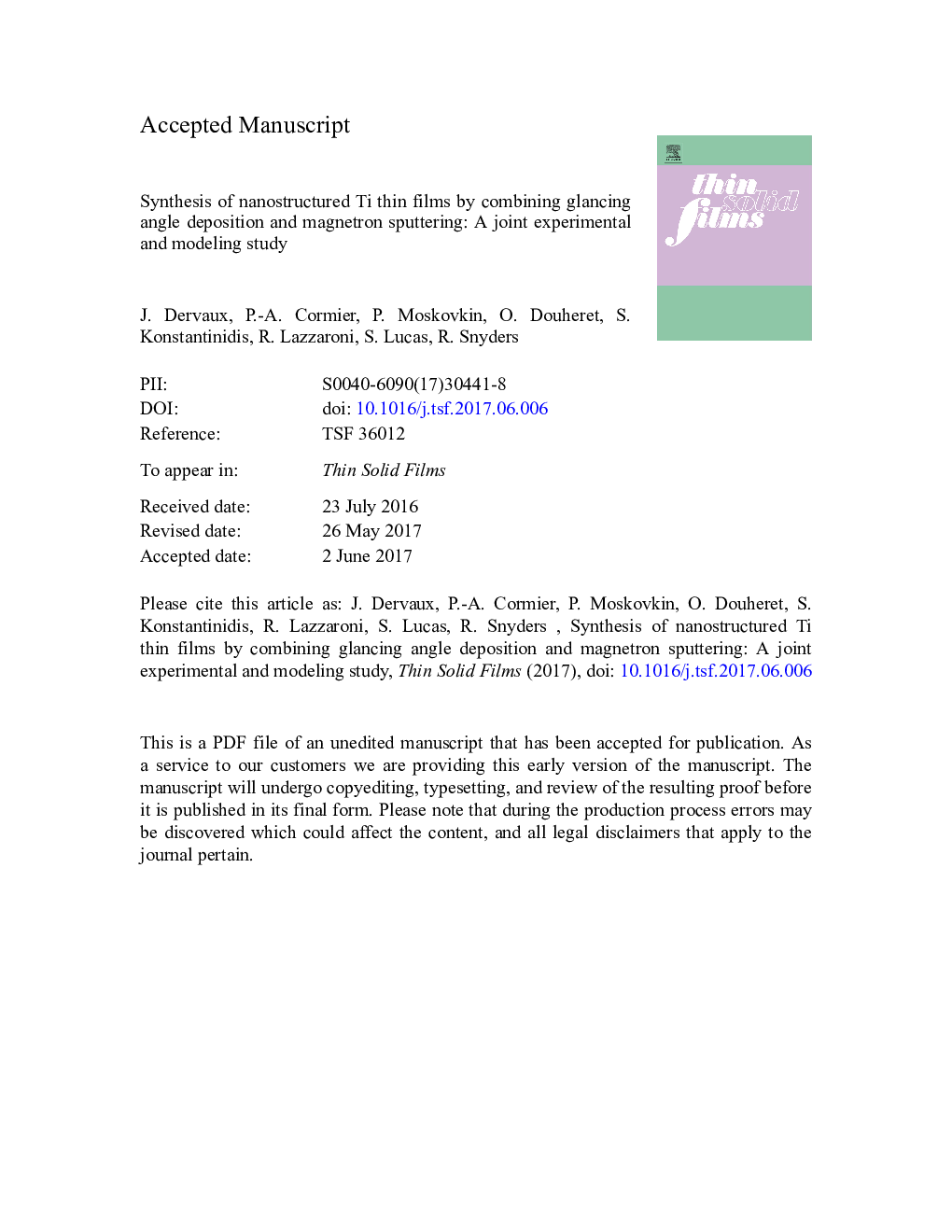| Article ID | Journal | Published Year | Pages | File Type |
|---|---|---|---|---|
| 5466033 | Thin Solid Films | 2017 | 53 Pages |
Abstract
In this work, glancing angle deposition and magnetron sputtering are combined to synthesize nanostructured Ti films. Different type of microstructures (tilted columns, straight pillars, zigzags) are obtained as a function of the experimental conditions. As a support, kinetic Monte Carlo simulations are performed to understand the observed trends using the NASCAM (NAnoSCAle Modeling) code. The latter is used to simulate the growth of the films and to explain the effect on the obtained structures of experimental parameters such as the substrate temperature, the gas pressure as well as the substrate tilting and rotation speed. NASCAM enables quantitative prediction of the density, the surface roughness, and the column shape asymmetry. In addition, the effective porosity (Ïe) of the structures was evaluated from the simulation data for two molecules presenting different size (0.64 and 3.20Â nm). The results show that Ïe decreases with the size of the adsorbed molecule, from above 50% for the small molecule to below 10% for the larger one. This is understood by considering the accessibility of the pore as a function of the size of the molecules. These data are correlated to experimental results obtained by transmission electron microscopy.
Keywords
Related Topics
Physical Sciences and Engineering
Materials Science
Nanotechnology
Authors
J. Dervaux, P.-A. Cormier, P. Moskovkin, O. Douheret, S. Konstantinidis, R. Lazzaroni, S. Lucas, R. Snyders,
